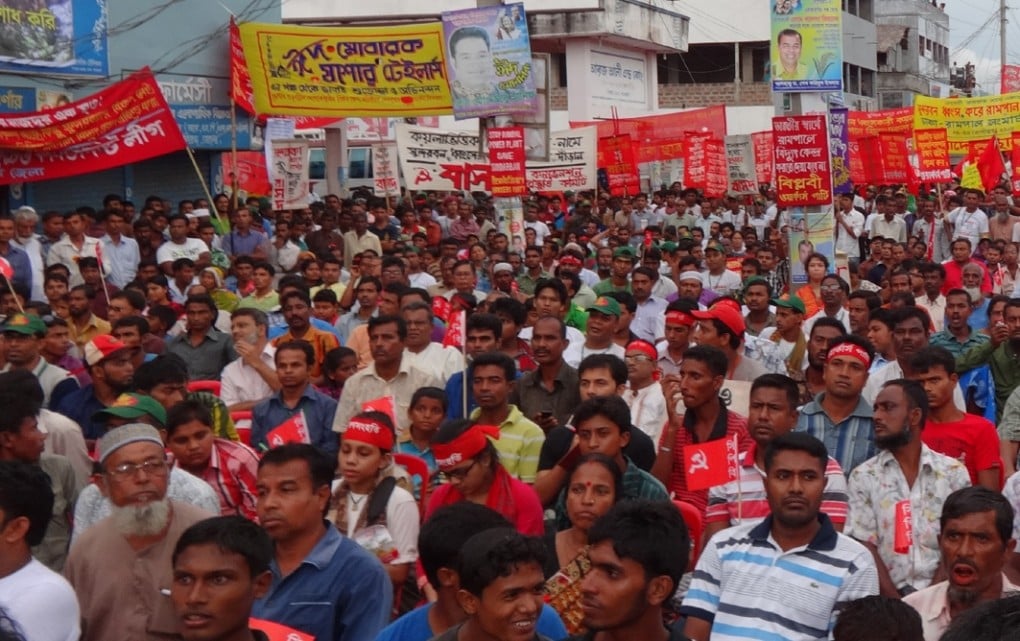Bangladesh is looking for new funders for the controversial Rampal coal-fired power plant, a Bangladesh-India joint venture project close to the world’s largest mangrove forest in the Bay of Bengal, as a Norwegian investor pulls out over environmental concerns.
India’s National Thermal Power Company (NTPC) and Bangladesh’s Power Development Board (PDB) are the equal partners of the plant that would generate 1,320 megawatts of electricity every day.
Strong opposition from environmentalists and civil society groups has delayed the implementation of the project only only 14 kilometres from the Sundarbans mangrove forest, home to the Bengal tiger and other endangered species .
The two companies had agreed to finish the project by 2016 in Bagerhat district, some 300 kilometres from Dhaka.
“We have been in negotiation with many interested financers for the project. Hopefully, we will finalise the funder by June this year,” Vijay Sanker Tamrakar, managing director of the Rampal power plant, told thethirdpole.net.
Tamrakar, however, declined to disclose the names of these funders.
He claimed the Rampal power plant will install state-of-the art technology that will cause “no pollution”, to allay the fears of environmentalists.
Local activists are encouraged by the withdrawal of the Norwegian investor. The state-owned Government Pension Fund Global of Norway was planning to invest Tk 4,300 million ($55 million).
Norway’s Council on Ethics recommended dropping the project that threatens the Sundarbans, which shields Bangladesh’s southwestern coastline from floods and natural disasters
Erik Forberg, senior adviser to the ethics council, told the Prothom Alo newspaper that the committee suggested his country’s finance ministry not to fund the project “based on sufficient information and research”.
The council has referred to the ‘strong concern’ expressed by the UNESCO, which awarded the Sundarbans the world heritage site in 1997, and the fact that the International Finance Corporation (IFC) recommendations have not been followed
“This is a prudent decision of the Norwegian government and the government of Bangladesh should abandon it on similar grounds,” said Rizwana Hasan, chief of the Bangladesh Environmental Lawyers’ Association.
Professor Anu Mohammad, who led a protest march against the Rampal thermal power project, told thethirdpole.net: “The agreement is non-transparent and the government must make it public so that people can come to know about the project”.
Bangladesh and India agreed to implement the Rampal power plant to meet the growing energy demand in Bangladesh. Only 53% of people have access to electricity and the government have promised to boost this to 100% by 2020, largely through imported coal. At present, Bangladesh electricity generation depends on natural gas reserves which are running out.
Read also: Bangladesh pushes for solar energy, but not hard enough
On 2013, protesters from across the country marched to the proposed site in Rampal and demanded the immediate halt of the power plant, but the government did not listen.
Pollution and environmental risks
Tamim, engineer and professor at the Bangladesh University of Engineering and Technology (Buet), pointed out coal-fired power stations are always highly polluting, no matter where you set up.
In addition to the pollutants, he said, human activities and the building of associated infrastructure near the power plant would destroy the Sundarbans.
Both the Rampal power plant and another proposed plant in Matarbari,Chittagong, are supposed to use ultra-super critical technology which reduces pollutants by 50% compared to conventional coal-fired plants. But environmentalists allege that the project may not use the latest technology as the authorities have promised.
Abdullah Harun Chowdhury, an environment professor at Khulna University, said there were “loopholes” in the environmental impact assesment of the Rampal power project.
“For example, the EIA report says proper measures will be taken if pollution takes place. These are evasive clauses. There is no clear cut statement on containing pollutions,” he told thethirdpole.net.
Quoting the EIA report, Chowdhury said the coal plant will generate 1,950 metric tonnes of ash every day, a total of 711,750 metric tonnes a year.
“They would dump the ash in nearby low land,” he said.
“This ash contains pollutants such as sulpher oxide, nitrogen oxide and other heavy metals that would ultimately mix with the waters of the rivers, canals and water bodies, also polluting the ground water through recharge.”
Pollutants will kill fish and contaminate the whole food chain of the Sundarbans with heavy metals. This will in turn threaten public health as people consume contaminated fish and fruit.
Engineer and former power secretary Akhter Hossain, said burning coal will lead to acid rain, damaging the forest, flora and fauna of the Sundarbans and surrounding areas.
Hossain also said the project would also struggle to transport the 10,000 metric tonnes of coal required by the plant every day.
“The channels leading to the plant site in Rampal will not allow the large cargo ships for shallow depth of the river. The large ships must wait in the deep sea and small cargo ships must carry coal to the site,” he said.
The US Environmental Protection Agency warns that “coal-fired power plants use large quantities of water for producing steam and for cooling. When coal-fired power plants remove water from a lake or river, fish and other aquatic life can be affected, as well as animals and people who depend on these aquatic resources”.
The EPA further says pollutants build up in water used in power plant boilers and cooling systems. If the water used in the power plant is discharged to a lake or river, the pollutants in the water can harm fish and plants. Further, if rain falls on coal stored in piles outside the power plant, the water that runs off these piles can flush heavy metals from the coal, such as arsenic and lead, into nearby water bodies.
Millions of people in Bangladesh depend on the Sundarbans for fishing, honey collecting and other economic activities.
The mangrove forests of also provides vast amount of fish which meets a significant portion of the country’s protein demand.
“Killing the Sundarbans is similar to killing of the local people. So we will not allow anyone to destroy this forest,” Narayan Chandra, a fisherman from Rampal told thethirdpole.net

